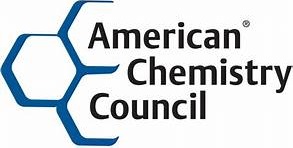The American Chemistry Council (ACC) and the American Petroleum Institute (API) have formed a new industry coalition, the Naphthalene Workgroup.
The two associations are working together to respond to the Environmental Protection Agency’s (EPA) announcement of the release of the draft IRIS Assessment for Naphthalene in 2025, as well as to monitor EPA’s 2023 decision to pre-prioritize naphthalene among other chemistries under the Toxic Substances Control Act (TSCA).
The group also plans to review and comment on the draft toxicological profile for naphthalene released by the Agency for Toxic Substances and Disease Registry (ATSDR) in May 2024.
Naphthalene is an aromatic carbon that has a wide range of uses and benefits across many industries, applications, and consumer products. Naphthalene is used in petroleum-derived fuels and as a component of crude oil and coal tar; in the polymers industry, particularly in the manufacturing of resins and plastics; in the production of surfactants, which are primary components of detergents and other cleaning products; and in the production of synthetic dyes.
In chemical manufacturing, naphthalene serves as a key raw material to produce various chemicals and products, including resins, plastics, dyes, and pesticides. Industries that rely on these naphthalene-derived products view it as an essential component of their manufacturing processes and supply chains.
Naphthalene’s versatility as a chemical intermediate allows for the synthesis of a wide range of compounds with broad applications. Naphthalene and its derivatives are also essential components in chemical research and development, used as model compounds in studies of aromatic chemistry, reaction mechanisms, and molecular interactions.
This essential chemistry is regulated by various agencies within the U.S. government, including the EPA, the Occupational Safety and Health Administration, and the Department of Transportation, providing oversight of naphthalene’s production, use, storage, transportation, and disposal.
In addition to federal regulations, naphthalene may also be subject to regulations imposed by state and local authorities. These regulations may include additional requirements for handling, storage, and disposal of naphthalene-containing products and wastes at the local level.
The draft IRIS assessment, which the group formed to address, is an EPA assessment of potential health hazards associated with exposure to naphthalene. This assessment could play a critical role in informing regulatory decisions and public health policies regarding the use and management of naphthalene, but the IRIS program has received widespread criticism that it fails to utilize the best available science and methods, lacks transparency, and is unresponsive to peer review and stakeholder comments and recommendations.
The Naphthalene Workgroup also plans to monitor and prepare for EPA’s pre-prioritization of naphthalene under TSCA, which mandates identifying chemicals that warrant further evaluation due to potential risks to human health or the environment. In September 2023, EPA proposed 15 substances for pre-prioritization, including naphthalene. Although it was not subsequently designated as a high priority for risk evaluation in December 2023, it is likely that it will be prioritized within the next few years.
As per the press release, the group plans to address the draft toxicological profile for naphthalene released by the ATSDR in May. This profile, for which stakeholder comments will be accepted until August 1, 2024, characterizes the toxicologic effects of naphthalene and determines the types or levels of exposure that may present risk of adverse health effects.
































